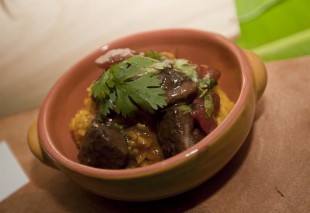

Peru makes a push towards superfoods at Gulfood

Peru has reinforced its superfood credentials during Gulfood 2017 with the launch of its “Superfoods Peru” brand.
The campaign celebrates Peru’s status as one of the world’s top producer of superfoods highlighting the quality, variety and benefits of the country’s food offering.
Peru has a variety of agricultural produce that is synonymous with healthy living. Foods such as quinoa, golden berries, chia seeds, maca root, sacha inchi, purple corn, camu camu, lucuma, asparagus, and blueberries, among many others.
“Six years ago, when we opened the Ministry of Foreign Trade and Tourism of Peru, it was so difficult for me to explain what quinoa is, way more than you could of imagined,” Ministry of Foreign Trade and Tourism of Peru director Alvaro Silva-Santisteban F. said.
“However, with today’s consumers seeking healthier choices and new culinary experiences, we see strong export potential for Peruvian produce. Our government anticipates export volumes for superfoods will triple to US$15 billion in the medium term as a result of the campaign. We also expect to see up to 15% annual growth in cropland dedicated to superfoods,” he added.
The trend is reflected in Peru’s agricultural exports to the UAE, which in 2016 increased by 52% over the previous year. Among the top agricultural exports were grapes, pomegranates, avocados, asparagus, jalapeños, blueberries, mangoes, organic bananas, quinoa, chia seeds, pulses and corn.
“Fresh fruit and vegetables are among Peru’s top exports to the GCC. Last year Peruvian businesses closed deals worth US$15 million as a result of their participation in Gulfood,” said Silva-Santisteban F.
“On a weekly basis, we have one different superfood that can be incorporated into a person’s diet, that is grown and harvested in Peru,” he added.
Super foods and its derived dishes are perceived to have high prices on restaurant menus, Silva-Santisteban F. explained the myth behind it. “We are working in close quarters with the authorities of the region on freight forwarding costs. What makes the avocado expensive is the transshipment of two months or 45 days, it won’t make it. So we have to fly it over, which means it could have a higher cost in this market as compared to the ones received from other countries. It’s not the product that is expensive, it is what’s behind the product that makes it costly. Nonetheless, the demand is still high but we are working on making our superfoods ever-present in more shopping carts.”